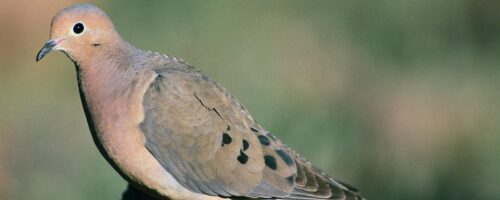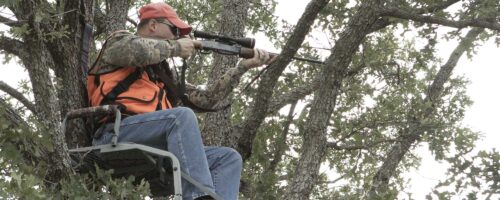Funnel trapping provides useful information about fish species present in a pond and likely provides the best option for pond managers to evaluate the presence and abundance of small catfish such as bullheads. Also, funnel trapping is useful for catching live bait for hook and line fishing.
Pond managers have multiple options to monitor fish populations, such as hook and line surveys, seine surveys and funnel trap (called minnow trap in Oklahoma regulations) surveys. Hook and line surveys and seine surveys have been addressed in previous articles, Hook and Line Fish Sampling and Seine Sampling a Pond, and a Noble Research Institute fact sheet How to Survey the Fish in Your Pond, so this article focuses on funnel trap surveys.
Each survey technique provides somewhat different information about a pond community. Hook and line surveys usually target certain adult fish, such as largemouth bass, bluegill and some other sunfish species. Surveys with a 20-foot seine target certain juvenile aquatic organisms such as largemouth bass, bluegill, shad, minnows, frogs and salamanders as well as adult and juvenile mosquitofish and invertebrates. Funnel trap surveys used in the manner described in this article target juvenile catfish, some sunfish species (especially smaller species) and some minnow species. Resources such as Freshwater Fishes Found in Texas can help identify fish collected in surveys.
In Oklahoma, trapping is a legal method to collect nongame fish such as black bullhead, bluegill, green sunfish, redear sunfish, golden shiner, fathead minnow, etc. It is not a legal technique to harvest Oklahoma game fish such as largemouth bass, channel catfish or crappie, so game fish accidentally caught in a trap must be released unharmed immediately. In Oklahoma, the user’s name and address must be attached to a trap and no more than three traps may be used at once.
Funnel trap construction (for one design option)
- Form 1/8- to 1/4-inch mesh, 3-foot-wide hardware cloth into a cylinder 12 to 18 inches in diameter over three plastic, fiberglass, wood or metal hoops; slightly overlap the edges, and tie the mesh together and to the hoops with cable ties or suture with rust-resistant wire (cylinder length same as hardware cloth width).
- Form hardware cloth into two funnels with a 2-inch opening on the small ends and the same diameter as the cylinder on the large ends, and tie or suture along the overlaps.
- Tie or suture a funnel into each end of the cylinder with the small end inside the trap.
- Cut an access door on the side of the cylinder to allow bait management and fish removal.
- Hinge one side of the door with rings, cable ties or wires, and latch the other side with wire or clips. I often use a larger piece of hardware cloth for the door than was removed to provide more overlap and a better seal.
- Tie a rope onto one end of the trap so the trap can be placed into and retrieved from a pond without getting wet.
Funnel trap use
- Place a pelleted feed product (e.g., for dog, hog, cattle, etc.) in a small mesh bag and hang it in the middle of the trap so it does not touch the sides. Close and latch the door.
- Place the trap in 3 to 5 feet of water with the door on top.
- Retrieve and check the trap daily.
- Remove fish from the trap and note/record numbers and sizes of each species caught. P
- lace the trap in a new location each day and add bait if necessary.
- Trap in at least three locations around the pond, and continue trapping new locations until nothing new is captured. Remove the trap from a pond when it cannot be checked at least daily.



Comment